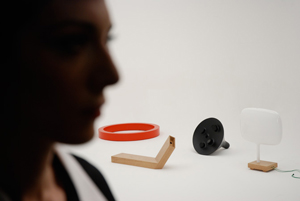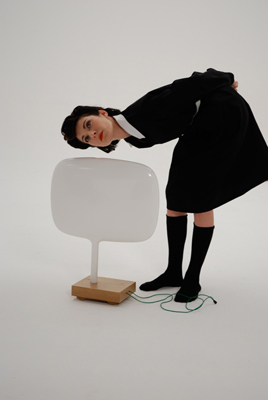

Critical Design FAQ
Anthony Dunne & Fiona Raby
1. What is Critical Design?
Critical Design uses speculative design proposals to challenge narrow assumptions, preconceptions and givens about the role products play in everyday life. It is more of an attitude than anything else, a position rather than a method. There are many people doing this who have never heard of the term critical design and who have their own way of describing what they do. Naming it Critical Design is simply a useful way of making this activity more visible and subject to discussion and debate.
Its opposite is affirmative design: design that reinforces the status quo.
2. Where did it come from?
Design as critique has existed before under several guises. Italian Radical Design of the 1970s was highly critical of prevailing social values and design ideologies, critical design builds on this attitude and extends it into today's world.
During the 1990s there was a general move towards conceptual design which made it easier for noncommercial forms of design like critical design to exist, this happened mainly in the furniture world, product design is still conservative and closely linked to the mass market.
The term Critical Design was first used in Anthony Dunne's book Hertzian Tales (1999) and later in Design Noir (2001). Since then many other people have developed their own variations.
3. Who does it?
Dunne & Raby and their graduate students from the Royal College of Art (RCA) such as James Auger, Elio Caccavale and Noam Toran, are probably the most well known, but there are other designers working in a similar way who would not describe what they do as critical design: Krzysztof Wodiczko, Natalie Jeremijenko, Jurgen Bey, Marti Guixe ...
4. What is it for?
Mainly to make us think. But also raising awareness, exposing assumptions, provoking action, sparking debate, even entertaining in an intellectual sort of way, like literature or film.
5. Why is it happening now?
The world we live in today is incredibly complex, our social relations, desires, fantasies, hopes and fears are very different from those at the beginning of the 20c. Yet many key ideas informing mainstream design stem form the early 20c.
Society has moved on but design has not, Critical Design is one of many mutations design is undergoing in an effort to remain relevant to the complex technological, political, economic and social changes we are experiencing at the beginning of the 21c.
6. What role does humour play?
Humour is important but often misused. Satire is the goal. But often only parody and pastiche are achieved. These reduce the effectiveness in a number of ways. They are lazy and borrow existing formats, and they signal too clearly that it is ironic and so relieve some burden from the viewer. The viewer should experience a dilemma, is it serious or not? Real or not? For Critical design to be successful they need to make up their own mind.
Also, it would be very easy to preach, a skilful use of satire and irony can engage the audience in a more constructive away by appealing to its imagination as well as engaging the intellect. Good political comedians achieve this well. Deadpan and black humour work best.
7. Is it a movement?
No. It's not really a field that can be neatly defined. It's more about values and an attitude, a way of looking at design and imagining its possibilities beyond the narrow definitions of what is presented through media and in the shops.
8. What are its main relatives?
Activism
Cautionary Tales
Conceptual Design
Contestable Futures
Design Fiction
Interrogative Design
Radical Design
Satire
Social Fiction
Speculative Design
9. What are the biggest misconceptions?
That it is negative and anti-everything.
That it is only commentary and cannot change anything
That it is jokey
That it is not concerned with aesthetics
That it is against mass-production
That it is pessimistic
That it is not real
That it is art
10. But isn't it art?
It is definitely not art. It might borrow heavily from art in terms of methods and approaches but that's it. We expect art to be shocking and extreme. Critical Design needs to be closer to the everyday, that's where its power to disturb comes from. Too weird and it will be dismissed as art, too normal and it will be effortlessly assimilated. If it is regarded as art it is easier to deal with, but if it remains as design it is more disturbing, it suggests that the everyday as we know it could be different, that things could change.
11. Isn?t it a bit dark?
Yes, but not for the sake of it. Dark, complex emotions are ignored in design, nearly every other area of culture accepts people are complex, contradictory and even neurotic, but not design, we view people as obedient and predictable users and consumers.
One of critical Design's roles is to question the limited range of emotional and psychological experiences offered through designed products. Design is assumed to only make things nice, it's as though all designers have taken an unspoken Hippocratic oath, this limits and prevents us from fully engaging with and designing for the complexities of human nature which of course is not always nice. It is more about the positive use of negativity, not negativity for its own sake, but to draw attention to a scary possibility in the form of a cautionary tale.
12. And its future?
A danger for critical design is that it ends up as a form of sophisticated design entertainment: 90% humour 10% critique. It needs to avoid this situation by identifying and engaging with complex and challenging issues. Areas like Future Forecasting would benefit from its more gritty view of human nature and ability to make abstract issues tangible. It could also play a role in public debates about the social, cultural and ethical impact on everyday life of emerging and future technologies.